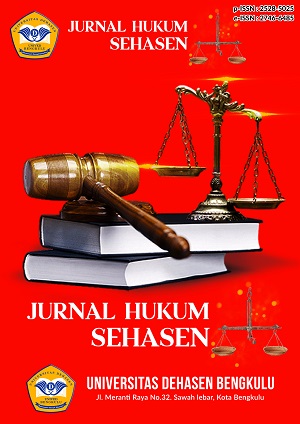Legal Responsibility Of Parents For Children Who Commit Traffic Violations And Cause Traffic Accidents
Abstract
This study aims to analyze the juvenile justice system that regulates parental responsibility for traffic violations resulting in accidents. The research employs an approach designed to provide a comprehensive analysis of the legal issues under investigation. The methods used include the statute approach to examine relevant regulations, the case approach to analyze court rulings, and the conceptual approach to understand the legal concepts underlying the norm-setting of a regulation. The legal material analysis is conducted by organizing and categorizing data based on specific patterns, allowing for in-depth conclusions regarding parental responsibility for children who come into conflict with the law due to traffic violations. The findings reveal that an examination of Law Number 11 of 2012 concerning the Juvenile Justice System indicates that parents have a responsibility in the diversion process for children who commit criminal offenses. This responsibility includes providing consent in the diversion agreement, compensating the victim, and participating in education, training, or community service. However, for traffic offenses regulated in Article 311, paragraphs 4 and 5 of Law Number 22 of 2009, diversion cannot be applied as the criminal penalty exceeds seven years. In Verdict Number 26/Pid.Sus-Anak/2019/PN.Jap, Marlon Stalone Tan Subay was found guilty of violating Article 311, paragraph 4, making diversion inapplicable. The juvenile justice process was still conducted under the principles of restorative justice, covering stages from investigation to trial. The judge considered deterrent effects and the learning process for the child to prevent repeating similar offenses. Parents continue to play a crucial role in educating, guiding, and supervising their children to prevent future legal violations.
Downloads
Copyright (c) 2025 Bengat Hasiholan, Lina Sinaulan, Erwin Owan Hermansyah Soetoto

This work is licensed under a Creative Commons Attribution-ShareAlike 4.0 International License.






